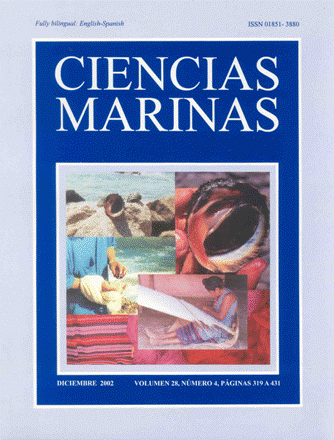Population structure, effort and dye yielding of the snail Plicopurpura pansa (Gould, 1853) in the Mexican Pacific
Main Article Content
Abstract
The purple snail (Plicopurpura pansa) is a conspicuous rocky-shore species in the tidal zone of the American tropical Pacific. It is considered a potential resource because of the dye it produces. In the 1980s the snail underwent exploitation in the Pacific coast of Mexico. Samples in 12 rocky shores of the Baja California Sur, Jalisco and Oaxaca states, and the Socorro Island were made, finding a sexual ratio near to 1:1, densities ranging from 0.47 to 1.24 snails m–2 and a relation between dye yield and specimens' length. By interviews with the Mixteco people in Oaxaca and milking of the snails over cotton skeins, dye yield was calculated as 2.5 liters of dye per week/fisherman or 2.2 skeins per week/fisherman.
Downloads
Article Details
This is an open access article distributed under a Creative Commons Attribution 4.0 License, which allows you to share and adapt the work, as long as you give appropriate credit to the original author(s) and the source, provide a link to the Creative Commons license, and indicate if changes were made. Figures, tables and other elements in the article are included in the article’s CC BY 4.0 license, unless otherwise indicated. The journal title is protected by copyrights and not subject to this license. Full license deed can be viewed here.

